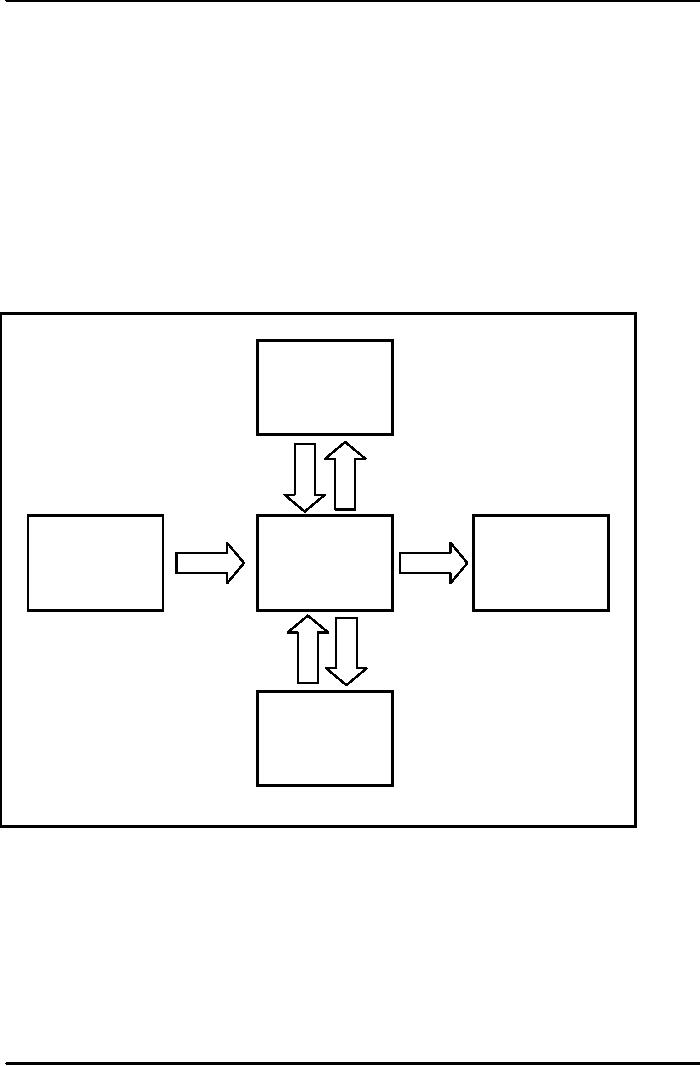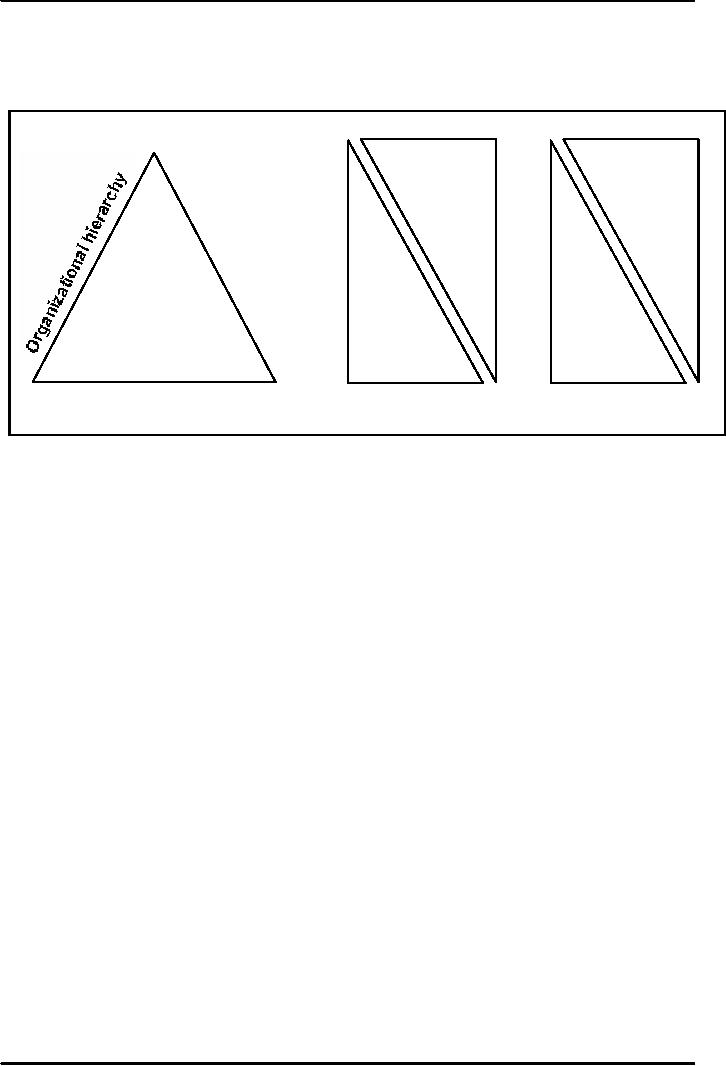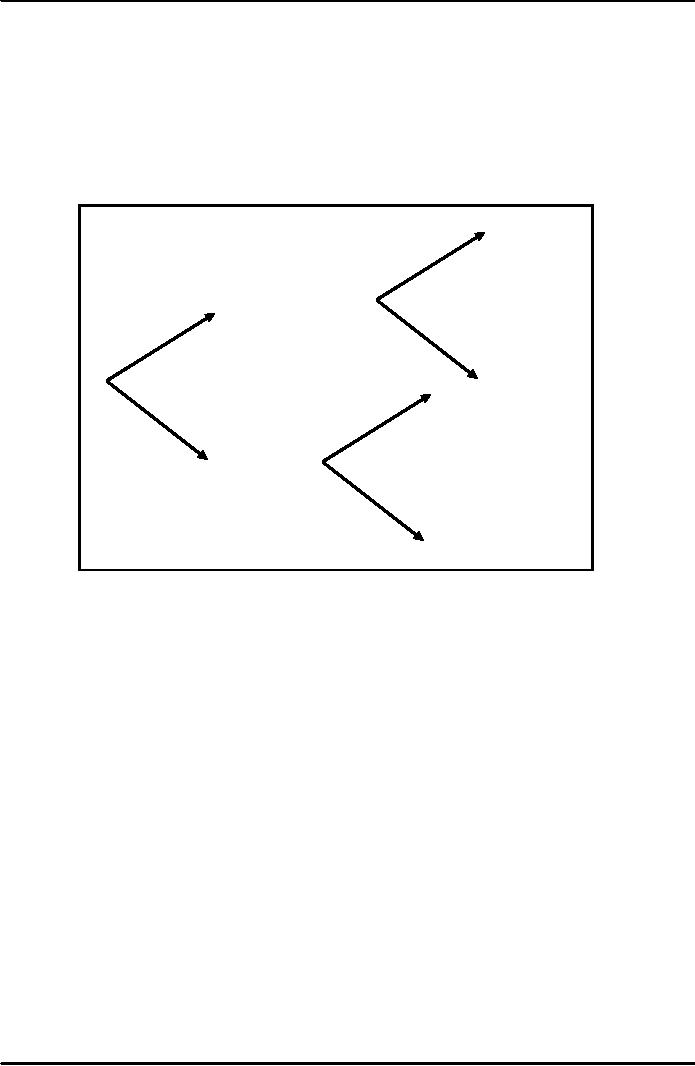 |

Introduction
To Public
AdministrationMGT111
VU
LESSON
21
DECISION
MAKING
At the
end of the lecture the students
will be able to under the relations
between decision making
and
planning:
-
Understand
the importance of decision making to
planning
-
Limitation
of rational decision making
process
-
Approaches
to decision making
Definition
First
of all we will define decision
making. It is defined as the selection of
course of action. It is the
core
of planning. A plan cannot exist
unless decision has been
made.
Decision
making is the most important action by
managers.
Theories
on Decision Making
There
are many theories of
decision making but we will
discuss the following:
1.
Organizational
Process Model
2.
Rationality
in Decision Making
Organizational
Process Model
All
organization follows rules, procedures
& system. Decisions in organizations
are made according
to
the procedures and systems
that organizations have for
example a centralized organization
decisions will
come
from top done. In organization
where authority is dispersed
participative decisions will be
made. So
the
processes and standard operating
procedure (SOP) will
determine the quality of decisions
made.
Rationality
in Decision Making
It
is said that effective decision making
must be rational. But what is
rationality. When is a
thinking
person
deciding rationally? People deciding rationally
are attempting to reach goals in a
systematic way.
They
collect all:
1)
relevant
information,
2)
analyze
information,
3)
evaluate
and
4)
make
choice
So
these are 4 basic steps in
making a rational decision. If we follow
these steps can we make
"best
decision"?
Can we get all information
for all alternatives.
Limited
Rationality
People
have worked on the issues
pertaining to all information to be
collected for all
alternatives.
What
has been analyzed is that it
is humanly impossible to collect all
information for all
alternatives. A
manager
must settle for limited
rationality. Information is limited, time
is limited and certainty is
limited.
Therefore
managers dislike risk and do not
reach the best solution. The
decision making is `satisfying',
that
is,
picking a course of action that is
good enough
Steps
in Rational Decision Making
1.
Search
for alternatives: Given that
we know our objectives, the
first step in
decision
making
is to search for alternatives.
Search for alternatives is
based on the concept of
`limiting'
factor. The Principle of the limiting
factor' is to recognize and
overcome factors
that
stand critically in the way of goals; the
best course of action can be
selected.
2.
Evaluation
of Alternatives: the next step in
decision making is to evaluate and
select one
that
contributes best to the goals
76

Introduction
To Public
AdministrationMGT111
VU
When
deciding about one alternative, managers
can use three basic
approaches:
1.
Experience
2.
Experimentation
3.
Research
and Analysis
Usually
mangers use their experience
and judgment to select an alternative.
Experience and
judgment
is really reliance on the
past.
The
other method by which
managers select alternatives is
experimentation, i.e., managers
would
try
an alternative and see its
results.
The
3rd method is arriving at alternatives
through researching and
analysis. The
interrelationship
between
the 3 methods is shown in Figure
1.
Figure
1
Experimentation
How
to Select
Reliance
on the
Choice
made
from
among
past
alternatives
Research
and
Analysis
Basis
for Selecting from Among
Alternative Courses of
Action
Types
of Decision
It
would be better to know the types of
decision that organizations
usually take. These
are:
1.
Programmed
2.
Non
Programmed
1.
Programmed
A
programmed decision is structured or
repetitive or routine decision. Example:
Reordering of
standard
inventory item, checking at a check
post
77

Introduction
To Public
AdministrationMGT111
VU
2.
Non-Programmed
Non-programmed
decisions are used for
unstructured, novel and ill-defined
situations of non
recurring
nature. Example: introduction of new
product in the market,
Figure
2
Non
Programmed
Un-
Structured
Highest
Level
Lowest
Programmed
Structured
Level
Nature
of Problems and Decision making in
Organization
Figure
2 attempts to explain the problems that
organizations may be confronted
with and the level
at
which decisions will be
made. At the lowest level in hierarchy
structured and programmed
decisions are
made.
Whereas non-programmed and unstructured
decisions are made at the
highest level in organization.
Decision
Making Situations
All
decisions are made in some
degree of uncertainty. Uncertainty is
related to the unknown
future.
Certainty
varies from relative certainty to uncertainty.
With increase in uncertainty the risk
increases. This
increase
in risk is based on the degree of
information about future. The distant the
decision is to be made in
future
more uncertain is the situation.
There
are two methods by which
quality of decision and certainty
can be improved. These
are:
1.
Mathematical
model (objective probabilities)
2.
Judgement
and experience (subjective
probabilities)
Approaches
to Decision making
A
number of modern techniques are used to
improve the quality of decision making
under normal
conditions
of uncertainty. The most important
are:
1.
Risk
Analysis
2.
Decision
tree
3.
Preference
theory
1.
Risk
Analysis: An
intelligent decision maker
would like to know the size
of risk they are taking in
deciding
to choose a course of action.
Example:
There is a situation where you have to
take decision and you
have worked out the
probabilities
of gains i.e., for situation
1 the gain is zero and the
probability you will have
zero gains is 90%.
Looked
other way there is 10%
probability that you will
not have zero gains.
The highest gain is 35
points
and
the probability is 40%. So as decision
maker you will decide
which gains to pick? Where
the probably of
gains
is high? The probability of
gain is highest where gain
is 10 and probability 80%. But the
probability of
high
gain (35) is only 40%. A
manager who is not risk
averse will go for last
gain.
78

Introduction
To Public
AdministrationMGT111
VU
Gain
0
10 15 20 25 30 35
Probability.90
.80 .70 .65 .60
.50 .40
of
achieving this gain
2.
Decision
Tree: A
decision tree approach makes
it possible to see major alternatives
and the
subsequent
decisions may depend on
events in future. Figure 3 is depicting a
decision tree for an
organization
to choose between either have
permanent security staff of its
own or to contract out
security
service. For each choice the
cost of success and failure
is worked out. If the decision
to
have
permanent security staff is taken,
then the successful implementation
will give gain of
Rs.100,
000
and failure will cost
Rs.200, 000. So in the final
analysis we see contracting out as giving
more
gains.
Success
100000
Permanent
Security
200000
Failure
200000
Success
200000
Contracting
100000
Failure
100000
3.
Preference or utility theory
explains individual attitude
toward risk. Some people are
willing to take
small
risk (risk averters), others are
willing to take greater risk
(gambler)
Example:
If there are 60% chance of being
right and having 20 gains or 40%
chance of being
wrong
and have 30 gains. Would the
person take the risk of taking
that decision for 40 chances
and having
higher
gains?
Factors
Affecting Decision-Making
Process
Following
are some of the factors that
influence decision making:
1.
Personal
Differences: People have different
personality, experiences and perception
and that
influences
their decision making.
2.
Role
of Knowledge: The knowledge of people varies,
therefore, individual managers
will
make
decision on the amount of knowledge they
possess.
3.
Institutional
Factors: Institutional factors
such as organization structure, procedure
and
system
affect decision making.
Concepts
Rational
decision:
a
systematic and sequential
process of making decisions
and
achieving
objectives.
Limited
rationality:
managers
have limited time and
information therefore their
79
Table of Contents:
- INTRODUCTION:Institutions of State, Individualism
- EVOLUTION OF PUBLIC ADMINISTRATION:Classical School, The Shovelling Experiment
- CLASSICAL SCHOOL OF THOUGHTS – I:Theory of Bureaucracy, Human Relation Approach
- CLASSICAL SCHOOL OF THOUGHTS – II:Contributors of This Approach
- HUMAN RELATIONS SCHOOLS:Behavioural School, System Schools
- POWER AND POLITICS:Conflict- as Positive and Negative, Reactions of Managers, Three Dimensional Typology
- HISTORY OF PUBLIC ADMINISTRATION – I:Moghul Period, British Period
- HISTORY OF PUBLIC ADMINISTRATION – II
- CIVIL SERVICE:What are the Functions Performed by the Government?
- CIVIL SERVICE REFORMS:Implementation of the Reforms, Categories of the Civil Service
- 1973 CONSTITUTION OF PAKISTAN:The Republic of Pakistan, Definition of the State
- STRUCTURE OF GOVERNMENT:Rules of Business, Conclusion
- PUBLIC AND PRIVATE ADMINISTRATION:The Public Interest, Ambiguity, Less Efficient
- ORGANIZATION:Formal Organizations, Departmentalization
- DEPARTMENTALIZATION:Departmentalization by Enterprise Function, Departments by Product
- POWER AND AUTHORITY:Nature of Relationship, Delegation of Functional Authority
- DELEGATION OF AUTHORITY:The Art of Delegation, Coordination
- PLANNING – I:Four Major Aspects of Planning, Types of Plans
- PLANNING – II:Planning ProcessThree principles of plans
- PLANNING COMMISSION AND PLANNING DEVELOPMENT:Functions, Approval Authority
- DECISION MAKING:Theories on Decision Making, Steps in Rational Decision Making
- HUMAN RESOURCE MANAGEMENT (HRM):Importance of Human Resource, Recruitment
- SELECTION PROCESS AND TRAINING:Levels at Which Selection takes Place, Training and Development
- PERFORMANCE APPRAISAL:Formal Appraisals, Informal Appraisals
- SELECTION AND TRAINING AND PUBLIC ORGANIZATIONS:Performance Evaluation,
- PUBLIC FINANCE:Background, Components of Public Finance, Dissimilarities
- BUDGET:Components of Public Income, Use of Taxes, Types of Taxation
- PUBLIC BUDGET:Incremental Budget, Annual Budget Statement, Budget Preparation
- NATIONAL FINANCE COMMISSION:Fiscal Federalism Defined, Multiple Criteria
- ADMINISTRATIVE CONTROL:Types of Accountability, Internal Control, External Control
- AUDIT:Economy, Effectiveness, Objectives of Performance Audit, Concepts
- MOTIVATION:Assumptions about Motivation, Early ViewsThree Needs
- MOTIVATION AND LEADERSHIP:Reinforcement Theory, Leadership, The Trait Approach
- LEADERSHIP:Contingency Approaches, Personal Characteristics of Employees
- TEAM – I:Formal & Informal teams, Functions of Informal Groups, Characteristics of Teams
- TEAM – II:Team Cohesiveness, Four ways to Cohesiveness, Communication
- COMMUNICATION – I:Types of Communication, How to Improve Communication
- COMMUNICATION – II:Factors in Organizational Communication, Negotiating To Manage Conflicts
- DISTRICT ADMINISTRATION:The British Period, After Independence, The Issues
- DEVOLUTION PLAN – I:Country Information, Tiers or Level of Government
- DEVOLUTION PLAN – II:Aim of Devolution Plan, Administrative Reforms, Separation of powers
- POLITICAL REFORMS:District, Tehsil, Functions of Union Council, Fiscal Reforms
- NEW PUBLIC MANAGEMENT (NPM):Strategy, Beginning of Management Approach
- MANAGERIAL PROGRAMME AGENDA – I
- MANAGERIAL PROGRAMME AGENDA – II:Theoretical Bases of Management, Critique on Management